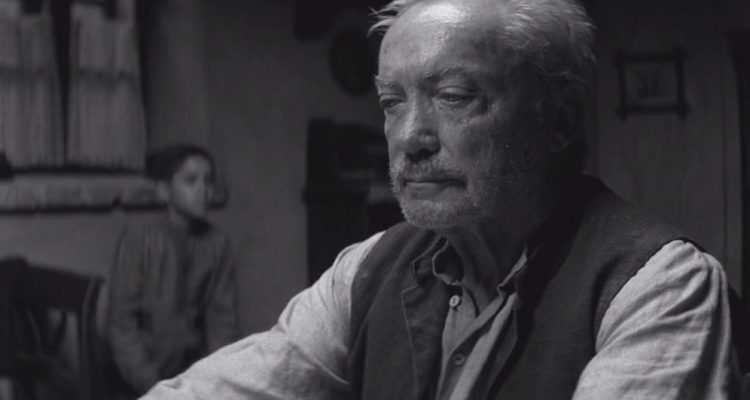IFC Films’ upcoming release, “The Painted Bird,” is a disturbing film. But that is to be expected when you have a black and white feature set during the end of World War I about a young boy that is on his own, trying to do whatever it takes to survive in the face of violence and brutality.
READ MORE: ‘Relic’ Trailer: Emily Mortimer Stars In The Breakout Horror Film From Sundance
And in an exclusive clip we are sharing with our readers, we’re able to take a peek at one of the incredibly disturbing moments in the film, featuring legendary actor Udo Kier. In the clip, we see what looks like an uncomfortable, silent dinner with Kier serving as the patriarch. However, that’s when the cats are introduced and the sounds they make will haunt you.
Kier stars alongside Petr Kotlár, Stellan Skarsgård, Harvey Keitel, Barry Pepper, Julian Sands, Lech Dyblik, Jitka, Cvancarová, and Aleksey Kravchenko in the film. “The Painted Bird” is written and directed by Vàclav Marhoul. The new drama marks the first directorial effort for Marhoul in over a decade, since 2008’s “Tobruk.” He also helmed the 2003 feature, “Smart Philip.”
“The Painted Bird” arrives in select theaters and VOD on July 17.
Here’s the synopsis for the film:
Based on the acclaimed Jerzy Kosiriski novel, THE PAINTED BIRD is a meticulous 35mm black and white evocation of wild, primitive Eastern Europe at the bloody close of World War I. The film follows the journey of The Boy, entrusted by his persecuted parents to an elderly foster mother. The old woman soon dies and the Boy is on his own, wandering through the countryside, from village to village, farmhouse to farmhouse. As he struggles for survival, The Boy suffers through extraordinary brutality meted out by the ignorant, superstitious peasants and he witnesses the terrifying violence of the efficient, ruthless soldiers, both Russian and German. In a defining scene, one of the peasants shows The Boy the flight of a captive bird, whom the man has painted and then released back into its own flock. The bird is immediately ripped apart because it is different from its fellows. That lesson reinforces all The Boy already knows and will soon know better: difference is fatal. But there are rare moments of compassion: a German soldier spares The Boy, a priest intervenes on his behalf, and finally The Boy becomes the protégé of a Russian sniper, who is kind to the child, but ruthless with the enemy. And there are signs of love. The Boy is seduced by an older girl, finally re-discovering the comfort of intimacy, only to realize that he has been used. When he is miraculously reunited with his weakened father at the end of the war, The Boy is cold and impenetrable, hardened by his ordeal. Yet we can still glimpse something of the old, sensitive Boy behind the eyes of the new. Perhaps there is hope.

